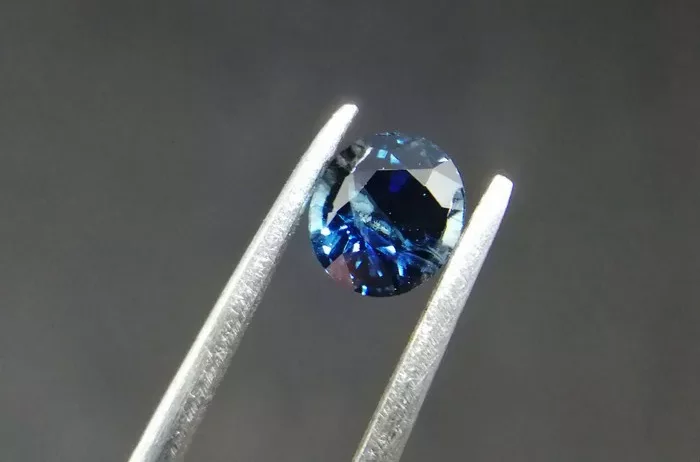Sapphire, a gemstone renowned for its elegance and mystery, captivates both jewelers and gem enthusiasts with its diverse color palette. While blue sapphires are the most recognized and revered, the rarest colors of sapphire often lie beyond the conventional blue hues. This article aims to provide a detailed introduction to the rarest colors of sapphire, exploring their characteristics, origins, and cultural significance.
Overview of Sapphire Gemstones
Sapphire is a variety of the mineral corundum, which is composed primarily of aluminum oxide (Al₂O₃). It shares the same mineral family with ruby, the only difference being that ruby is specifically red, while sapphires encompass all other colors. Blue sapphires are the most famous and widely sought-after, but sapphires can also be found in a myriad of other colors, including pink, yellow, green, purple, orange, and even black and colorless varieties.
The Spectrum of Sapphire Colors
Blue Sapphire: The Classic Choice
Blue sapphires are perhaps the most recognized and revered among all sapphire colors. Their deep blue shades evoke feelings of tranquility, loyalty, and wisdom. Often chosen for engagement rings, they symbolize trust and commitment, making them a popular choice for couples worldwide. The most valued blue sapphires are described as Cornflower blue or Kashmir Blue, exhibiting a deep, even color tone without being too dark.
Fancy Sapphires: Beyond the Blues
Sapphires in colors other than blue are usually prefixed with the color name, such as pink sapphires or yellow sapphires. These fancy sapphires are objects of true wonder, showcasing a vibrant array of hues. While blue sapphires dominate the market, fancy sapphires offer a unique and rare alternative.
Padparadscha Sapphire: The Rarest of the Rare
Among the fancy sapphires, Padparadscha sapphires stand out as the rarest and most highly valued. This unique gemstone is a blend of pink and orange, resulting in a peachy or salmon-colored stone. Named after a delicately colored lotus flower, Padparadscha sapphires are possibly the rarest of all sapphires, highly priced, and rarely available on the open market.
Determining the Rarest Colors
Rarity Based on Color and Quality
The rarity of sapphire colors is determined by several factors, including hue, tone, saturation, and clarity. A nice, even color throughout the gemstone is highly desired, with a deep color tone that is not too dark to appreciate the color fully. While blue sapphires are highly valued, other colors can also command high prices if they exhibit exceptional color and clarity.
Natural Occurrence and Mining
The rarity of sapphire colors is also influenced by their natural occurrence and mining conditions. Some colors are more rare than others due to the geological conditions required for their formation. For example, Padparadscha sapphires require specific geological conditions to produce their unique peachy-orange color, making them exceptionally rare.
The Rarest Colors of Sapphire
Padparadscha Sapphire: A Rare Gem
As mentioned earlier, Padparadscha sapphires are the rarest of all sapphire colors. Their unique peachy-orange color is caused by a combination of chromium and vanadium impurities within the corundum crystal structure. This rare color combination, coupled with the gemstone’s scarcity, makes Padparadscha sapphires highly sought-after and highly priced.
Color-Change Sapphire: A Phenomenal Rarity
Another rare type of sapphire is the color-change sapphire. These gemstones exhibit a change in color when viewed under different types of light. For example, a color-change sapphire may appear bluish in daylight but turn reddish under electric lights. This phenomenon is caused by the gemstone’s crystal structure and the way it interacts with light. Color-change sapphires are highly valued for their unique and captivating property.
Star Sapphire: A Rare and Mystical Gem
Star sapphires are another rare variety of sapphire that exhibit a star-like pattern when viewed under certain lighting conditions. This pattern is caused by tiny, parallel needle-like inclusions within the gemstone that reflect light in a specific way. Star sapphires are highly valued for their mystical and enchanting appearance.
Cultural Significance and Symbolism
Western Culture
In Western culture, sapphires are often associated with loyalty, wisdom, and clear thinking. Blue sapphires, in particular, are seen as symbols of serenity and depth. They are popular choices for engagement rings and other jewelry, symbolizing trust and commitment.
Ancient Cultures
In ancient cultures, sapphires were believed to possess magical powers. They were thought to protect the wearer from harm, bring wisdom, and ensure good health. Many cultures revered sapphires as sacred gemstones, often incorporating them into religious rituals and ceremonies.
Conclusion
In conclusion, sapphires are a diverse and fascinating group of gemstones that offer a wide range of colors and properties. While blue sapphires are the most recognized and revered, the rarest colors of sapphire often lie beyond the conventional blue hues. Padparadscha sapphires, color-change sapphires, and star sapphires are among the rarest and most highly valued varieties. Each of these rare sapphires exhibits unique properties and characteristics that make them highly sought-after by collectors and jewelers alike.
Related topic:
- What Is More Expensive Emerald or Sapphire
- Why Sapphire Is Better Than Diamond
- What Is Parti Sapphire


